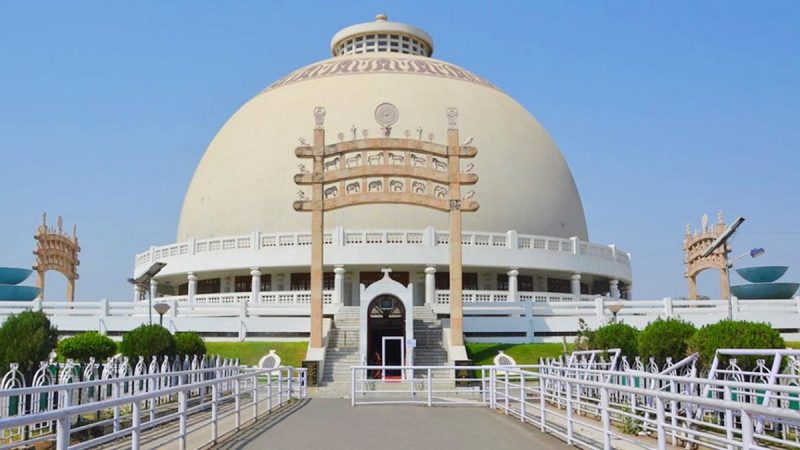Deekshabhoomi, located in Nagpur, holds a special place in the history of India’s struggle for social justice. One of Nagpur’s most recognisable sites, it is also an important Buddhist monument. The principal architect of the Indian Constitution, Dr. B.R. Ambedkar, and hundreds of his supporters converted to Buddhism in 1956 at this very site. This sacred ground holds historical significance of a landmark event.
The Conversion At Deekshabhoomi
The roots of Deekshabhoomi’s significance can be traced back to the socio-political landscape of India during the 20th century. Ambedkar played a pivotal role in drafting the Indian Constitution, advocating for fundamental rights and the abolition of untouchability. Mahasthavir Chandramani, a Burmese monk, administered the Three Jewels and Five Precepts pledge to Ambedkar and his spouse at Kushinagar on October 14, 1956. Then Ambedkar gave his thousands of followers the pledge of Three Jewels, Five Precepts, and 22 vows. A month and a half after the Deeksha ceremony, Ambedkar passed away on December 6, 1956. As a tribute, a stupa was built after his passing.
The act of conversion was a powerful rejection of the oppressive caste system and in Ambedkar’s view, promoted equality, justice, and human dignity. The symbolic significance of Deekshabhoomi as the site of this mass conversion resonates with the idea of a new beginning of a just and egalitarian society.
Also Read: India’s Expressway Man, Nitin Gadkari Is The Ultimate Foodie; Could Polish 6 Samosas In One Go
Deekshabhoomi Today
Deekshabhoomi stands today as a pilgrimage site for followers of Buddhism. This stupa is a masterpiece of architecture that draws tourists and Buddhists from all over the world. It represents a hollow, globe-like structure, designed by architect Sheo Dan Mal. Progressively higher columns enclose the stupa. Over 20,000 square feet of the bottom floor are dedicated to prayer. Like the stupa at Sanchi, the stupa has four gates that are sculpted with images of Dhammachakra, horses, elephants, and lions made of Rajasthani marble. There’s a bookstall by the main door.
The Preamble to the Indian Constitution, Bhikkhu Niwasa, a marble column containing 22 vows, and a Bodhi tree are located on the eastern side of the premises. A silver jar within a glass structure on a marble square holds Ambedkar’s ashes. In addition, there are two statues representing Lord Buddha.
To pay their respects, visitors come from all across the nation and the world. Deekshabhoomi continues to resonate in Indian society still. So, have you been to this place yet?
Where: S Ambazari Rd, Abhyankar Nagar, Nagpur
When: 7 am–8 pm
Cover image credits: Website/Nagpur Tourism

